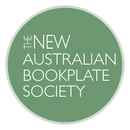
10 Interesting facts about bookplates
-
Bookplates in their modern form have existed since the 15th century in Germany but the earliest known evidence of a mark of ownership in a book or document comes from the reign of Amenophis III in Egypt (1391−1353 BCE).
-
Bookplates were originally used as a way to prevent theft in monasteries and libraries, where books were often valuable and rare.
-
The term "ex libris" is Latin for "from the library of".
-
Bookplates became popular among the wealthy during the Renaissance, as they were seen as a way to show off one's library and social status.
-
Many older bookplates feature a coat of arms, crest, or other heraldic symbol, as these were commonly used by the upper class to mark their property.
-
Bookplates can be made of many different materials such as paper, metal, wood, and even luxurious materials like leather.
-
Many famous people have designed or commissioned bookplates, including artists, writers, and politicians.
-
In the 19th century, pictorial bookplates became more of an art form, and many bookplate designs were illustrated by renowned artists.
-
Bookplates can be collectible items, there are clubs and societies dedicated to the collecting and study of bookplates around the world, including Australia's New Australian Bookplate Society.
-
Bookplates can also exist on the book covers rather than inside books. These are called supralibros.


